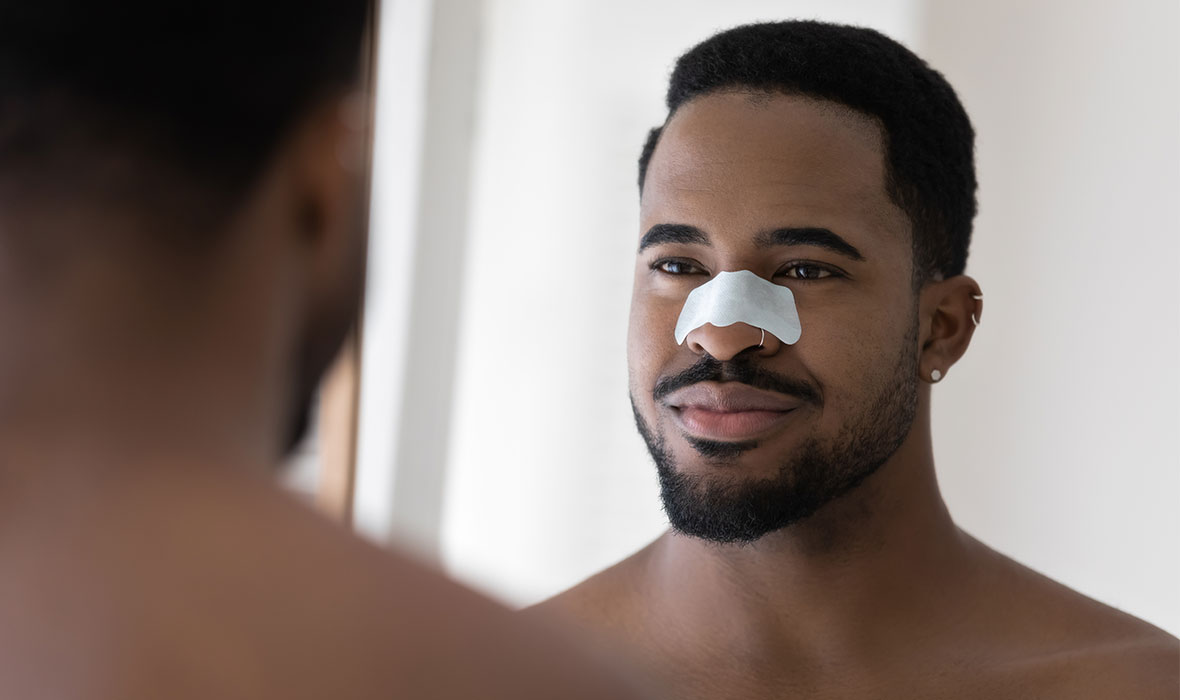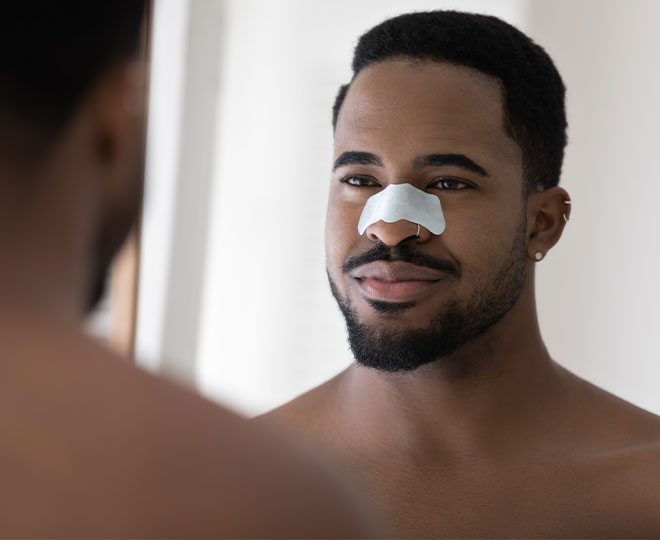When your acne flares up, you’re probably the first to know. You see a little bump in the mirror, then start your skincare routine in the hope that it disappears as soon as possible. However, knowing how to distinguish between different types of acne can be extremely helpful in properly treating and getting your skin healthy, quicker. Both blackheads and whiteheads are forms of acne – combinations of dead skin cells and excess oil trapped in pores. But there are key differences between blackheads and whiteheads that make recognizing which of the two you’re dealing with vital to a speedy recovery.
Whiteheads vs blackheads. Learn the difference.
-
What are whiteheads?
Whiteheads occur when excess oil (sebum) in the skin mixes with dead skin cells. This substance can clog pores and lead to small white or yellow bumps that form and get stuck at the opening of a pore. Want to know even more details on whiteheads? For more detailed information, check out what are whiteheads.
-
What are blackheads?
Blackheads also form when sebum and dead skin cells clog a pore. However, the pore never completely closes off. They are generally noninflammatory and flat. For more information on blackheads check out what are blackheads.
-
What is the difference between blackheads and whiteheads?
One of the immediately recognizable differences between blackheads and whiteheads, and the reason they got their names, comes from how each gets its distinct color. Whiteheads are closed off from the air by a thin layer of skin, so the trapped oil and skin cells keep their natural whiteish, yellowish color. Blackheads are open, which exposes the buildup of sebum and skin cells to oxygen. This turns the material gray or black, hence the name blackhead.
How to remove whiteheads
Your first thought when you see a whitehead may be to pinch it and drain it. However, doing this at home without the assistance of a dermatologist or aesthetician can lead to infection and even scarring.
The ProactivMD® 3-Piece System comes with a daily cleanser that gently cleans the skin. This helps remove dead skin cells that can clog pores.
Make sure to cleanse the excess oil from your skin morning and night. If you work out and sweat, it’s important to cleanse right after as well since excess oil and moisture are a recipe for further aggravating whiteheads. Also, always remove all your makeup before heading to bed and change your pillowcase at least once per week.
How to remove blackheads
Just like with whiteheads, squeezing and popping is not the recommended treatment, and can lead to inflammation or even scarring.
Cleansers are still an option for dealing with blackheads, but you can also add in a topical product that includes salicylic acid and benzoyl peroxide to kill acne-causing bacteria. The Proactiv+® Acne Treatment System is supported by a Pore Targeting Treatment, which contains 2.5% benzoyl peroxide to fight acne directly in the pores, and Complexion Perfecting Hydrator, which contains 0.5% salicylic acid, to help clear pores.
How to help prevent whiteheads
Make sure you are regularly washing your face at least twice a day – once in the morning and once at night. If you sweat heavily or work out, you’ll likely need to add in another face wash each day to combat the buildup of bacteria and oil. You can focus on the t-zone of the face. This area includes the forehead, nose and chin, and is where whiteheads most often appear.
Avoid touching your face during the day. As you pick things up and touch different surfaces, your hands pick up dirt and bacteria. If you then touch your face, you can transfer this pore-clogging cocktail to where you are most sensitive to whiteheads. We know, it’s hard not to touch your face, but if you catch yourself resting your head in your hands or touching your face, try a different position.
How to help prevent blackheads
Routine is extremely important for blackhead prevention, especially if you have oily skin. Focus on a routine that removes the excess oil and dead skin cells while cleaning off the dirt and bacteria. You can focus on the t-zone (forehead, nose and chin) of your face since blackheads are also most commonly found there where the most oil is produced.
Also make a note to only use non-pore-clogging, or noncomedogenic makeup and products on your face.
Key takeaways
Blackheads and whiteheads start forming the same way. Dead skin and sebum (oil) mix together to clog your pores.
Both blackheads and whiteheads can be exacerbated (or lead to inflammatory acne) if you try to pop them without the proper guidance of a dermatologist or aesthetician.
Keep your face as clean as possible by washing it twice daily.
Check out proactiv’s acne treatment systems, which can all be customized for your unique skin to help treat and prevent blackheads and whiteheads.
The bottom line
Blackheads and whiteheads are some of the most common enemies in the acne world, and most of us have experienced one or both. Making sure you identify which is which, so you can apply the proper treatment, is the key to helping your skin clear up as fast as possible.






